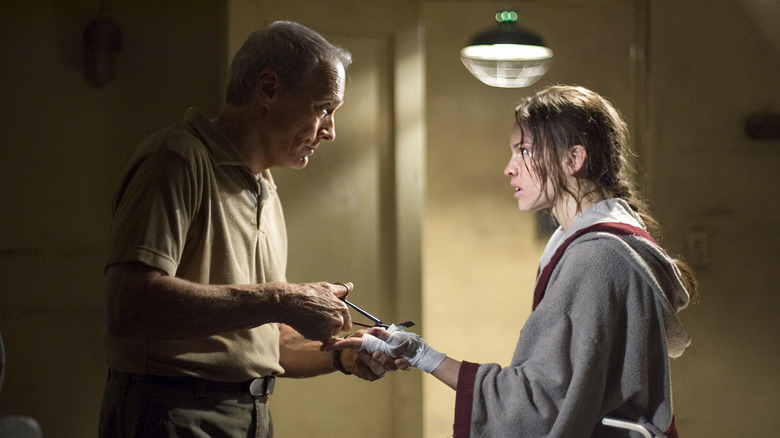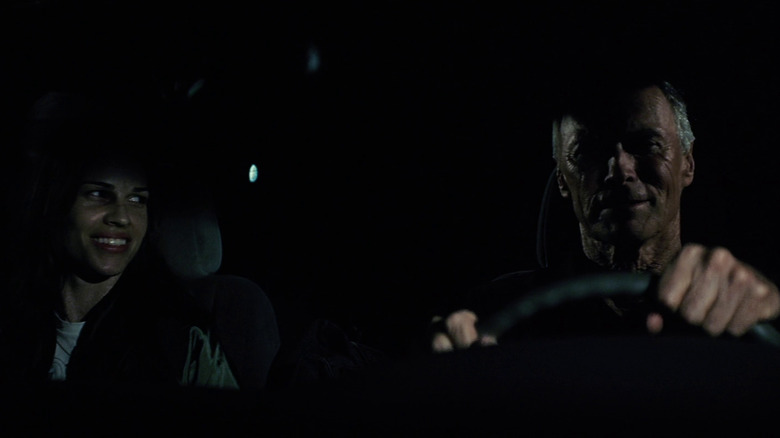Why Light And Darkness In Million Dollar Baby Was So Important For Clint Eastwood
The story of "Million Dollar Baby" is familiar: a wise, older trainer helps a misfit boxer defy expectations and achieve success. Unlike other fighter movies, Clint Eastwood's drama has a shadowy palette. He fills the frame with more black than light. Amy Taubin from Film Comment remarks on this unusual directorial choice: "This is such a dark film visually, right on the cusp of being too dark to see. It's really gorgeous, but you seldom see an American film that risks being this dark pretty much all the way through."
Eastwood told Film Comment that one of the main reasons he chose this color scheme was that he "wanted the film to look like an anytime film. It could have taken place in the Thirties or the Forties and it's only the cars or what's on the radio that tells you you're in one time and not another." Working with cinematographer Tom Stern, Eastwood experimented with the sources of darkness and light as much as he could:
"[A] lot of times I do the old John Ford lighting gag. I go around and I shut off lights. [...] [Tom Stern] says, 'Here it is, look at the shot.' And he shows it to me with the light on and the light off. And I say, 'Okay, leave the light off.' Now I could have fiddled around and said we'll shoot it once with the light on and once with it off. But no, I made the decision, and then he got bolder and bolder and I guess I got bold, and we came to this thing."
In the hands of lesser filmmakers, such a dark composition would be frustrating to watch, but Eastwood uses the inky hues in an elegant way that elevates the film's themes.
The shadows draw Maggie and Frank together
In the interview, Eastwood says that he gave "Million Dollar Baby" a "film noir-esque look." The genre is known for its stark chiaroscuro lighting that reflects the morally ambiguous characters and stories about the dark aspects of human nature. On the surface, "Million Dollar Baby" appears to be another triumph of the underdog story, but Eastwood's melodrama is more concerned with the ideas of lost dreams, unexpected twists of fate, and death. After Maggie is paralyzed from a fighting accident, Frank must confront his Catholic guilt over the decision of whether or not to end her life with euthanasia.
The lighting also conveys the intimacy of Maggie and Frank's relationship. Throughout the film, they move in and out of the shadows, as if they are afraid to reveal their true selves and are still hiding from a world that has already beaten them down. Maggie comes from an unstable, low-income family and Frank is estranged from his daughter. The lack of light pulls your focus onto the broken, lonely souls at the center of this story. They have no one else but each other, and the darkness draws them together; their relationship is the only light in their lives.
"Million Dollar Baby" is not an uplifting narrative about an athlete who defeats the odds. Eastwood's melancholy canvas captures the hard truths and difficult ethical dilemmas that his characters face, as well as the overall somber tone of the story.

